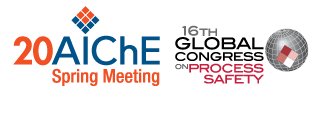

Several articles report that after an 18-24 month period over half of the Advanced Process Control (APC) installations are performing at either pre-installation levels or have been removed. There are diverse reasons for the performance shortfall; a major one is that the process characteristics drift from those that generated the controller model. The core of APC is the controller model, typically a linear local representation of the process (gains and dynamics), which is obtained by best matching the model to process responses from incremental changes in the manipulated and disturbance variables. But, when throughput rates and other attributes of the process (reactivity, efficiency, fouling, feed components, etc.) change, the model no longer represents the process, control degrades, and the benefit of the APC diminishes. In this case, recalibration of the model (retesting the process response and adjusting model coefficients to best match) can return the APC to full functionality
A procedure has been developed that employs dimensionless equations to compute the optimum recalibration interval. This optimum recalibration interval is based on a form of decline in performance that is modeled based on the owner-user performance criteria. Further, the dimensionless numbers can be used to compare the performance across units of similar types and across industries. The form of the equation allows for quantitative processes to change the interval for continuous improvement in the recalibration procedure. This continuous improvement process is based on learning curve theory.
This presentation extends that evaluation to the continuous improvement process. Specifically, this presentation looks at four aspects of the continuous improvement cycle. First the for the cost of recalibration is evaluated in light of experience curves. Specifically, a model for evaluating the expected progress of recalibration costs. Second, the income is evaluated for learning. For every recalibration to bring the APC back to functionality, there is learning that takes place. A proposed model is presented for this progression of learning Third, an overall yield equation is developed for an APC. This yield equation contains three aspects. The pre-APC variance, the reduction in the standard deviation for implementing the APC and the standard error on which limits are based. Fourth this overall yield equation is used to show there is a limit to the overall yield and thus the income for subsequent applications for learning to the income.
Presenter(s)
Language
Pricing
Individuals
| AIChE Member Credits | 0.5 |
| AIChE Pro Members | $19.00 |
| Fuels and Petrochemicals Division Members | Free |
| AIChE Graduate Student Members | Free |
| AIChE Undergraduate Student Members | Free |
| AIChE Explorer Members | $29.00 |
| Non-Members | $29.00 |
